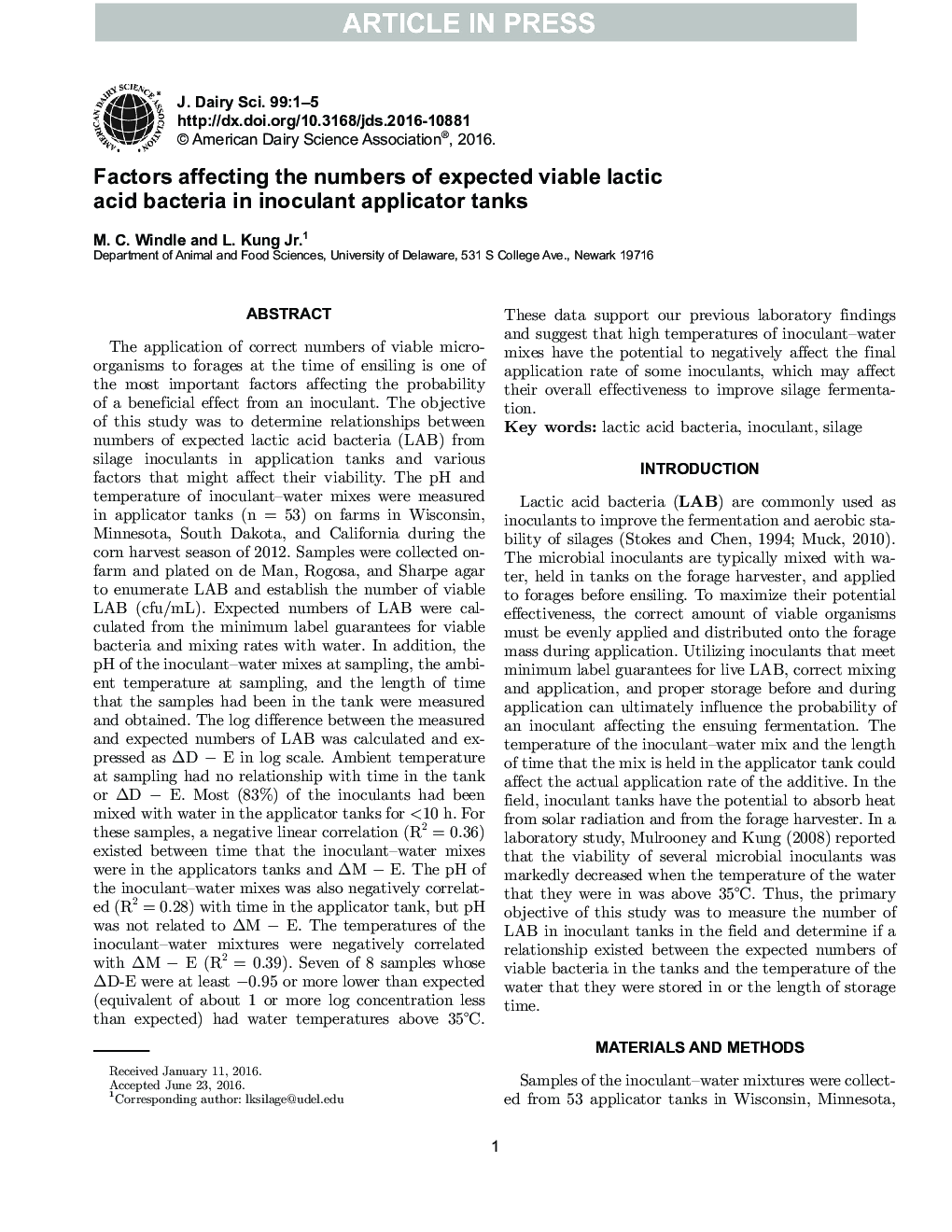| کد مقاله | کد نشریه | سال انتشار | مقاله انگلیسی | نسخه تمام متن |
|---|---|---|---|---|
| 5542704 | 1402521 | 2016 | 5 صفحه PDF | دانلود رایگان |
عنوان انگلیسی مقاله ISI
Factors affecting the numbers of expected viable lactic acid bacteria in inoculant applicator tanks
ترجمه فارسی عنوان
عوامل موثر بر تعداد باکتری های اسید لاکتیک قابل انتظار قابل استفاده در تانک های اپلیکیشنی تلقیح شده
دانلود مقاله + سفارش ترجمه
دانلود مقاله ISI انگلیسی
رایگان برای ایرانیان
کلمات کلیدی
باکتری اسید لاکتیک، سرماخوردگی سیلیس،
موضوعات مرتبط
علوم زیستی و بیوفناوری
علوم کشاورزی و بیولوژیک
علوم دامی و جانورشناسی
چکیده انگلیسی
The application of correct numbers of viable microorganisms to forages at the time of ensiling is one of the most important factors affecting the probability of a beneficial effect from an inoculant. The objective of this study was to determine relationships between numbers of expected lactic acid bacteria (LAB) from silage inoculants in application tanks and various factors that might affect their viability. The pH and temperature of inoculant-water mixes were measured in applicator tanks (n = 53) on farms in Wisconsin, Minnesota, South Dakota, and California during the corn harvest season of 2012. Samples were collected on-farm and plated on de Man, Rogosa, and Sharpe agar to enumerate LAB and establish the number of viable LAB (cfu/mL). Expected numbers of LAB were calculated from the minimum label guarantees for viable bacteria and mixing rates with water. In addition, the pH of the inoculant-water mixes at sampling, the ambient temperature at sampling, and the length of time that the samples had been in the tank were measured and obtained. The log difference between the measured and expected numbers of LAB was calculated and expressed as ÎM â E in log scale. Ambient temperature at sampling had no relationship with time in the tank or ÎM â E. Most (83%) of the inoculants had been mixed with water in the applicator tanks for <10 h. For these samples, a negative linear correlation (R2 = 0.36) existed between time that the inoculant-water mixes were in the applicators tanks and ÎM â E. The pH of the inoculant-water mixes was also negatively correlated (R2 = 0.28) with time in the applicator tank, but pH was not related to ÎM â E. The temperatures of the inoculant-water mixtures were negatively correlated with ÎM â E (R2 = 0.39). Seven of 8 samples whose ÎM - E were at least â0.95 or more lower than expected (equivalent of about 1 or more log concentration less than expected) had water temperatures above 35°C. These data support our previous laboratory findings and suggest that high temperatures of inoculant-water mixes have the potential to negatively affect the final application rate of some inoculants, which may affect their overall effectiveness to improve silage fermentation.
ناشر
Database: Elsevier - ScienceDirect (ساینس دایرکت)
Journal: Journal of Dairy Science - Volume 99, Issue 11, November 2016, Pages 9334-9338
Journal: Journal of Dairy Science - Volume 99, Issue 11, November 2016, Pages 9334-9338
نویسندگان
M.C. Windle, L. Jr.,
